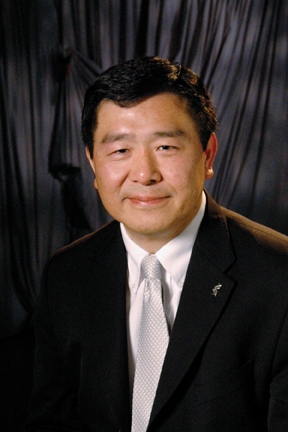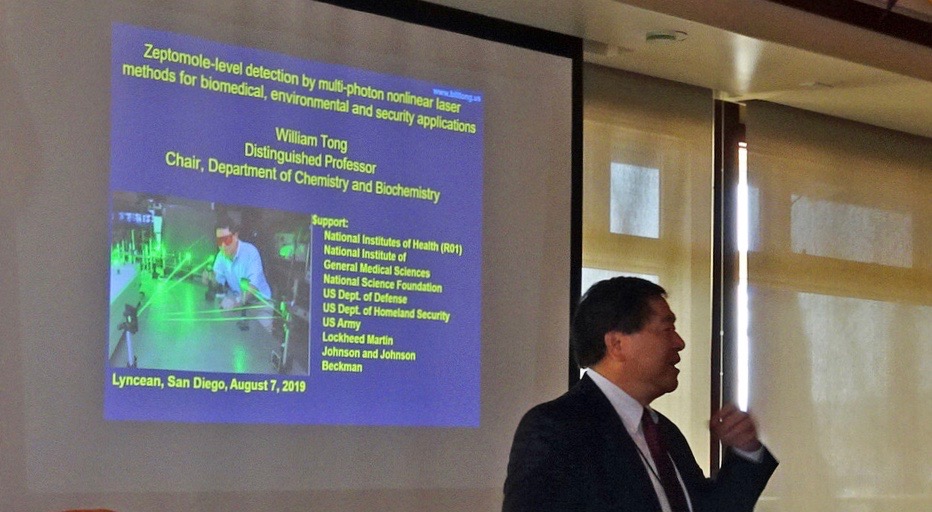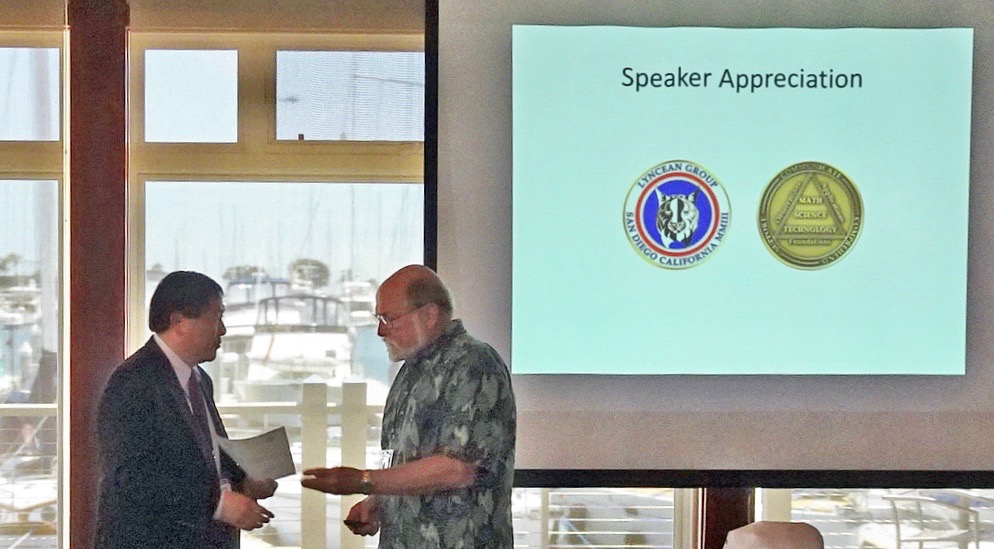130th MEETING OF THE LYNCEAN GROUP OF SAN DIEGO
Date: Wednesday, August 7, 2019, 11:30 AM
Location: Southwestern Yacht Club
2702 Qualtrough Street
San Diego, CA 92106 (Point Loma)
Speaker: William Tong, Distinguished Professor, Chemistry & Biochemistry Department, San Diego State University

Topic: Zeptomole-level (sub-parts-per-quadrillion-level) detection by multi-photon nonlinear laser methods for biomedical, environmental and security applications
Abstract:
Multi-photon nonlinear laser wave-mixing methods with zeptomole (10-21 mole) or sub-parts-per-quadrillion-level detection sensitivity are presented for a wide range of biomedical, environmental and security applications. Laser wave mixing offers better detection sensitivity levels as compared to fluorescence-based methods and yet our wave-mixing methods can detect both fluorescing and nonfluorescing molecules, i.e., labeled and native biomolecules without using tags or labels. The detector probe volume is very small (picoliter), and hence, it offers high spatial resolution for 2D or 3D mapping of single cells. Picoliter-level probe volumes also offer effective interfacing to microarrays, lab-on-a-chip, chip-based electrophoresis systems and microfluidics.
Unlike fluorescence methods, our laser methods produce a strong coherent laser-like signal beam with its own propagation direction, and hence, it is easy to detect with excellent signal-to-noise ratios. Our patented laser wave-mixing methods can distinguish not only large biomolecules but also small isotopes. Our laser-based detectors are more portable and less expensive than isotope-capable high-resolution mass spectrometers. Wave-mixing laser methods yield hyperfine profiles (atomic fingerprints), and hence, unambiguous isotope information from both stable and radioisotopes. Hence, one could use stable isotopes as biotracers instead of radioactive biotracer isotopes. We have also studied fast laser-induced diagnostic real-time monitoring of reaction rates, intermediate species and mechanisms of semiconductor materials. We use a wide range of lasers with wavelengths from UV (solid-state lasers) and visible (tunable external cavity diode lasers) to mid-IR (tunable quantum cascade lasers).
Potential applications include earlier detection of diseases (Parkinson’s, Alzheimer’s, Multiple Sclerosis), more sensitive detection of biomarkers, cancer cells, heart-failure biomarkers, and viruses (HPV, HIV), more sensitive detection of pollutants and chemicals both inside the human body and in the environment, remote standoff detection of chem/bio agents, and even authentication of paintings and art objects.


When Prof. Tong’s slides become available, we will add a link so they can be downloaded.
You can download Pete Lobner’s meeting slides by clicking on the following link:
Meeting Slides 8-7-19